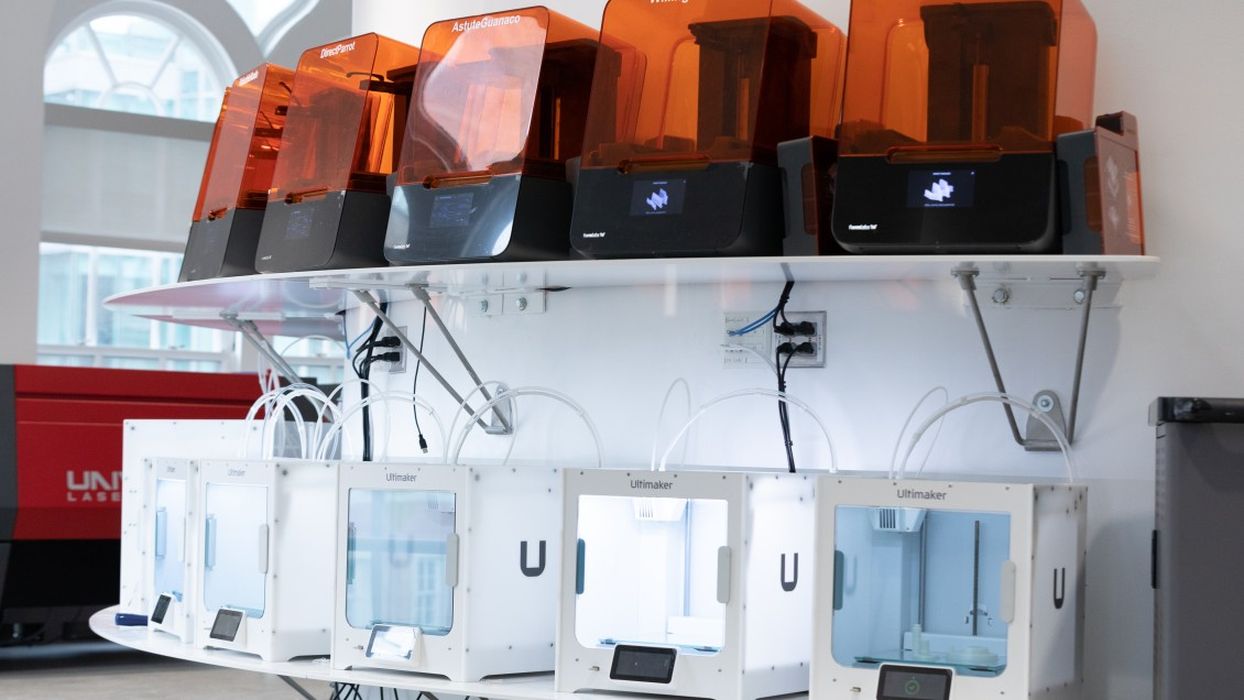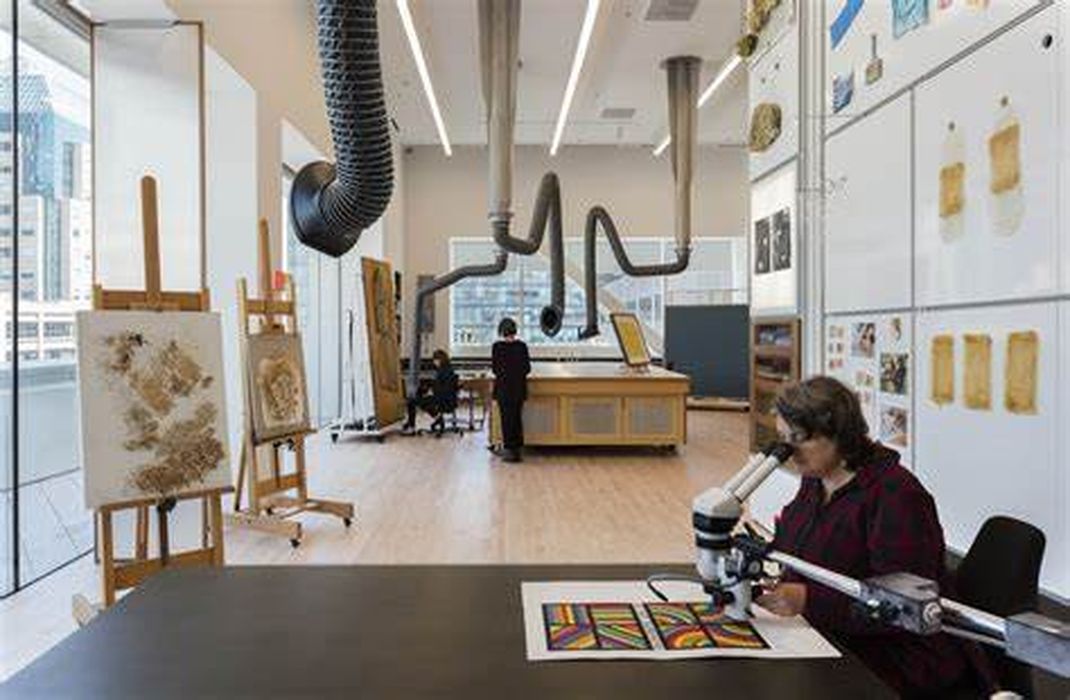
Charles R. Goulding and Preeti Sulibhavi explain how Cooper Union’s tuition-free initiative and its state-of-the-art 3D printing lab mark a bold new chapter in the institution’s storied history.
On the first day of the 2024/2025 school year, students at Cooper Union, a renowned institution in New York City, were greeted with thrilling news: tuition would be completely free for the year. Thanks to the generosity of Cooper Union alumni, the entire student body would benefit from this remarkable financial gift, which highlights both the school’s commitment to accessible education and the powerful bond shared among its alumni network. With an annual tuition cost of over US$40,000, this grant serves as a transformative opportunity for students pursuing degrees in art, architecture, and engineering—fields that Cooper Union is especially known for.
This announcement is just the latest development in Cooper Union’s storied history, a history that dates back to its founding in 1859. Originally envisioned by philanthropist Peter Cooper, the institution has always emphasized free education, providing students with a rigorous and interdisciplinary curriculum. Cooper Union has evolved significantly over the years, particularly in the technological realm, with its cutting-edge facilities like the Additive Manufacturing and 3D Printing Lab (ACCE) serving as prime examples of how the institution continues to shape the future of education and innovation.
The Storied Legacy of Cooper Union
The Cooper Union for the Advancement of Science and Art has long been a beacon for creative and technical education in the heart of New York City. Founded by industrialist Peter Cooper, who believed education should be “as free as air and water,” the school initially offered a completely free education to its students—a policy that held until 2014, when financial difficulties forced the institution to charge tuition. However, Cooper Union has continuously worked toward restoring its original vision of free education, and this year’s tuition grant represents a significant step in that direction.
Over the years, Cooper Union has produced an impressive roster of alumni who have made substantial contributions to society. Among its graduates are inventor Thomas Edison, pioneering civil rights lawyer Florence Knoll, architect Daniel Libeskind, and many other prominent figures in the arts, engineering, and architecture fields. Their success is a testament to the rigorous and interdisciplinary nature of the Cooper Union curriculum, which encourages students to push the boundaries of their respective disciplines.
The ACCE Lab: A Hub for Interdisciplinary 3D Printing
One of Cooper Union’s most impressive developments in recent years is the creation of the Additive Manufacturing and 3D Printing Lab, known as the ACCE Lab, which opened its doors in 2020. The lab is a cutting-edge facility designed to foster innovation at the intersection of art, architecture, and engineering. At its inception, the ACCE Lab housed 30 state-of-the-art 3D printing machines. Within just a few short years, it has expanded to 50 machines, underscoring the growing importance of 3D printing as both a tool and a medium in multiple disciplines.
What makes the ACCE Lab particularly special is its interdisciplinary mission. While many institutions segregate their art, engineering, and architecture programs, Cooper Union encourages collaboration across these fields, giving students access to a wide range of 3D printing technologies. These machines can handle various materials, from plastics to metals, offering students the ability to experiment with different forms of fabrication and prototyping.
- Architecture and 3D Printing: For architecture students, the ACCE Lab has opened up new possibilities for creating complex models and prototypes, enabling more precise designs and allowing students to explore innovative architectural forms. The ability to print with various materials means that students can better understand the tactile and structural qualities of their designs, bringing architectural concepts to life in ways that were previously unimaginable.
- Engineering and 3D Printing: For engineering students, the lab provides invaluable opportunities for prototyping, experimentation, and iteration. The 3D printing technology allows them to rapidly produce parts, mechanisms, and structures, speeding up the design process and enabling more comprehensive testing of their creations. Additionally, the ACCE Lab’s printers can work with high-performance materials like carbon fiber, giving students access to the same cutting-edge tools used in professional engineering firms.
- Art and 3D Printing: Art students at Cooper Union have also embraced 3D printing as a powerful medium for creating sculptures, installations, and other forms of contemporary art. The ACCE Lab allows artists to push the boundaries of traditional media, blending digital design with physical creation in new and exciting ways. Students can experiment with different scales, textures, and materials, resulting in works that challenge the viewer’s perception of art and technology.
The ACCE Lab has been instrumental in not only supporting student projects but also in fostering a culture of collaboration across disciplines. The ability to share knowledge and resources between architecture, engineering, and art students is a hallmark of the Cooper Union experience, and the ACCE Lab is the perfect embodiment of that philosophy.

Leveraging the Inflation Reduction Act Tax Incentives for Cooper Union’s Future
Beyond its cutting-edge educational programs, Cooper Union is also well-positioned to benefit from recent developments in U.S. tax law. As a nonprofit institution, Cooper Union can take advantage of the generous tax incentives provided by the Inflation Reduction Act (IRA), which went into effect on January 1, 2023. These incentives include substantial financial benefits for energy-efficient upgrades to buildings owned by nonprofit organizations, like Cooper Union.
- EPAct Designer Tax Incentives: Architects and engineers working on Cooper Union’s facilities could potentially qualify for EPAct designer tax incentives, which can offer over $5.00 per square foot for energy-efficient building upgrades, including HVAC. For a campus like Cooper Union, this could translate into significant savings, enabling the institution to reinvest those funds into student programs, scholarships, and further facility improvements.
- Direct Cash Payments for Energy Projects: The Inflation Reduction Act (IRA) also allows nonprofits to receive direct cash payments for qualifying alternative energy projects, typically covering 30% or more of project costs. Cooper Union has long been at the forefront of sustainability, and these new financial incentives offer the opportunity to further advance its efforts in creating a more energy-efficient campus. This is not only beneficial from a cost perspective but also serves as a valuable educational tool, providing students with real-world examples of sustainable architecture and engineering practices.
Given the school’s emphasis on architecture and engineering, there is also an opportunity for Cooper Union to incorporate these lessons into its curriculum. Students could work directly on designing energy-efficient systems for campus buildings, applying the same principles they are learning in class to real-world projects. This would offer a unique, hands-on learning experience that few other schools could match, while also helping Cooper Union reduce its carbon footprint and operational costs.

A Tuition-Free Future: The Power of Giving Back
The decision to offer free tuition for the 2024/2025 school year is a monumental step forward for Cooper Union in restoring its legacy of tuition-free education. The financial burden of attending a top-tier institution can be overwhelming, especially for students pursuing highly specialized fields like art, architecture, and engineering. By eliminating this burden, Cooper Union is reaffirming its commitment to accessibility and equality in education, ensuring that students are admitted based on merit, not their financial situation.
This generous gift from alumni demonstrates the power of community and the long-lasting impact that Cooper Union has on its graduates. The alumni who funded this tuition grant were once students themselves, benefiting from the school’s rigorous education. Now, they are paying it forward, ensuring that future generations of Cooper Union students will have the same opportunity to pursue their passions without the heavy weight of student loans.
The Research & Development Tax Credit
The now permanent Research and Development (R&D) Tax Credit is available for companies developing new or improved products, processes and/or software.
3D printing can help boost a company’s R&D Tax Credits. Wages for technical employees creating, testing and revising 3D printed prototypes can be included as a percentage of eligible time spent for the R&D Tax Credit. Similarly, when used as a method of improving a process, time spent integrating 3D printing hardware and software counts as an eligible activity. Lastly, when used for modeling and preproduction, the costs of filaments consumed during the development process may also be recovered.
Whether it is used for creating and testing prototypes or for final production, 3D printing is a great indicator that R&D Credit-eligible activities are taking place. Companies implementing this technology at any point should consider taking advantage of R&D Tax Credits.
Conclusion
Cooper Union stands at the crossroads of tradition and innovation. From its founding principles of free education to its cutting-edge ACCE Lab and forward-thinking approach to sustainable architecture and engineering, the institution continues to shape the future of its students and the world around them. The tuition grant for the 2024/2025 school year is more than just a financial gift—it’s a reaffirmation of the school’s mission to provide a transformative, interdisciplinary education that empowers students to create, innovate, and give back.
As Cooper Union moves forward, it remains an exciting place for the next generation of artists, engineers, and architects to learn, collaborate, and lead. The school’s legacy, intertwined with modern advancements like 3D printing and sustainable energy, ensures that it will continue to be a force for change and progress in the years to come.
